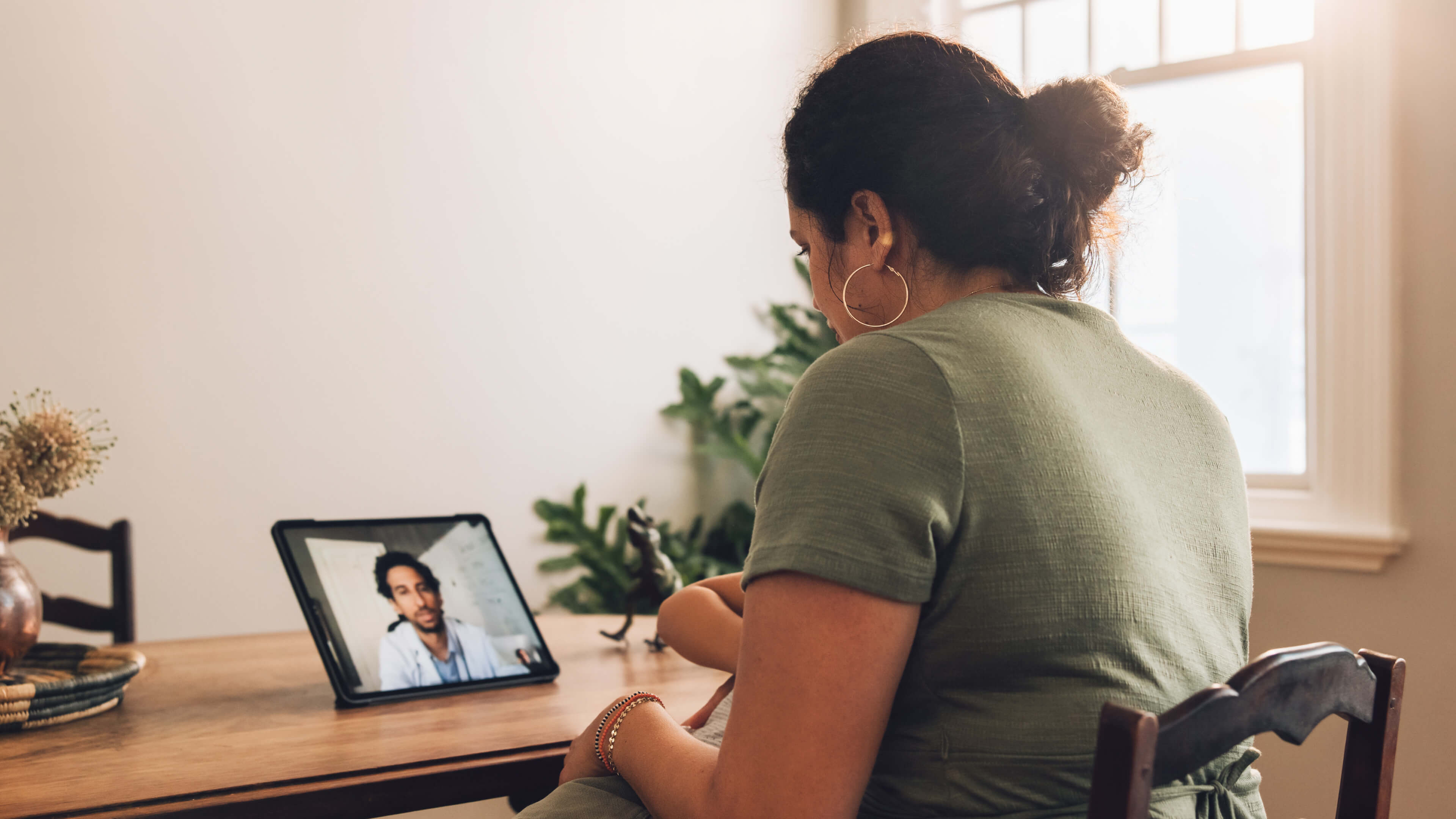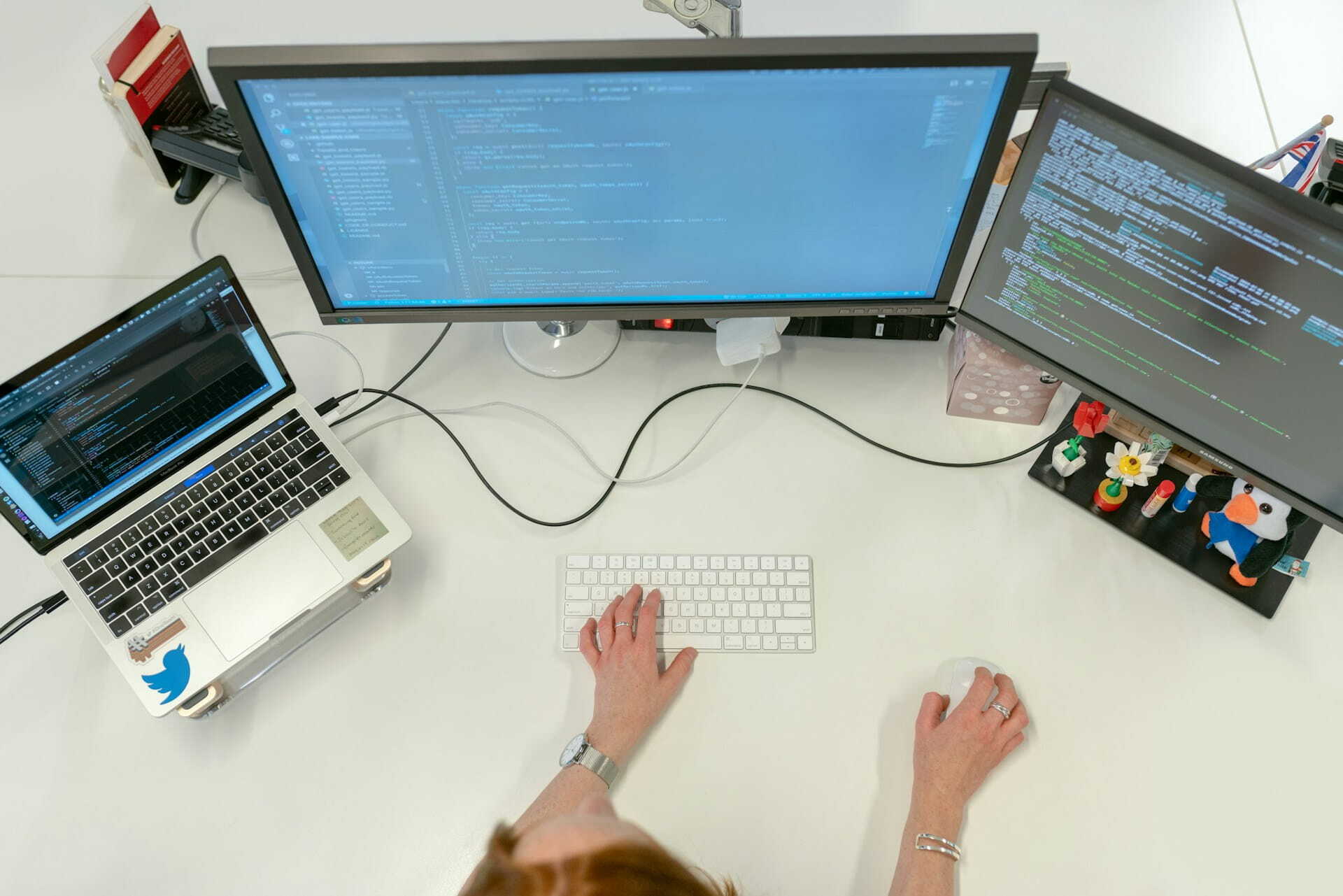22 August 2022 (updated: 22 August 2022)
8 Trends in Telehealth App Development for 2022
Chapters

Telehealth demand grew exponentially during the pandemic, but the advancements are not stopping with it. See 8 telehealth trends in app development for 2022.
According to McKinsey, the use of telehealth apps has increased by 3800% after the pandemic, and it seems like there is no going back. Patients and doctors alike appreciate the convenience and accessibility that comes with it. If you’re thinking about building your own app, then here are a few telehealth trends that you should be aware of before you move on to development.
8 telehealth trends that will dominate in the coming years
One of the telemedicine future trends worth taking note of is the growth of wearables. Let’s take a closer look at it.
Increased adoption of wearables accompanied by apps

Kyle MacDonald, Director of Operations at Force by Mojio
During the shutdowns, people were shying away from the hospitals, as they didn't feel safe to go see their doctor. While telemedicine has been around for a few years before the pandemic, it definitely exploded during the pandemic. As tech developers and doctors work more closely together, we're witnessing new innovations in the telehealth field. While the need for remote healthcare is still at an all-time high, doctors need a way to monitor certain patients; some on a daily basis. As long as the patient has an internet connection, doctors can now monitor their EKG and ECG monitors, some inhalers can transmit data to apps, and smart beds can also transmit data to doctors now. As the Internet of Medical Things continues to grow, we can expect to see more wearable tech, with corresponding apps arriving.
AR, VR & MR will lead to improved diagnostics & treatment

Gerrid Smith, Director of E-commerce of Fortis Medical Billing
In my opinion, if you felt that Augmented and Virtual reality is limited to game applications like Pokémon Go, you are in for a big surprise. AR and VR integration in mobile applications is rapidly becoming a standard element of numerous telemedicine applications. Mixed reality allows for the creation of an interactive virtual environment, which can lead to improved diagnosis. VR-enabled systems can also instruct patients with chronic pain in real-time on how to perform important exercises. AR applications have enormous potential in the treatment of neuropathic pain, other types of physical and sports rehabilitation, and mental health conditions. AR/VR-based 3D visualization and observation of a patient's mobility also contribute to improved treatment.
Artificial Intelligence will boost patient safety

Tanner Arnold, President & CEO of Revelation Machinery
In my opinion, almost every aspect of our life, including telemedicine, has been permeated by artificial intelligence, which is why I consider AI one of the most prominent telemedicine trends. The year 2022 will see the emergence of numerous sophisticated telehealth applications enabled by artificial intelligence technologies. AI may be incorporated with telehealth apps in a variety of ways, from chatbots to voice recognition to automated health alarms. AI-enabled features can assist patients in reducing their wait time, scheduling appointments, connecting with specialists, and asking health-related queries. AI-enabled capabilities enable clinicians to quickly examine a patient's medical history, read reports, generate digital prescriptions, and offer constant assistance. Since AI can automate routine activities and lessen the amount of work a physician must complete, it can aid in preventing burnout.
IoT solutions will become more advanced – a jump from wearables to intelligent pills

Nely Mihaylova, Content Editor at UNAGI Scooters
60% of healthcare organizations worldwide have already implemented IoT devices in their facilities, with the number expected to rise dramatically in the coming years. Suffice to say, IoT is set to dominate the top telehealth and telemedicine future trends. Consider the "intelligent pill," a promising and well-known innovation. The pill collects data using portable sensors, which is then transmitted to a mobile phone app, allowing patients to access data on their vital functions. IoT will have a significant impact on medical device optimization. Mobile and portable medical devices will not only record data but will also perform specific functions in response to commands or recognized situations.
Blockchain as the solution for protecting patient data
Michael Hess, eCommerce Strategy Lead at Code Signing Store
The healthcare industry is concerned about keeping these massive amounts of data secure. At the moment, the most widely used blockchain healthcare application is keeping vital medical data safe and secure. Blockchain has the incredible capability of maintaining an incorruptible, decentralized, and transparent log of all patient data. This transparency, as well as the ability to conceal an individual's identity with complex and secure codes, can protect the sensitivity of medical data. Because of its decentralized nature, Blockchain is a technology that will be widely used in the development of healthcare apps.
Voice & smart listening devices will speed up medical assistance

Josh Souders, Chief Marketing Officer at Joy Organics
Voice recognition and communication are already changing the face of retail, customer service, and telemarketing in industries other than technology. Voice technology will also be used in the healthcare industry. Voice technology will be used in apps for healthcare professionals in particular. The virtual healthcare assistant takes care of the opportunities expected to improve medical plans and speed up medical assistance (for example, questions like "Did they take the medication?" or "How is the patient responding to the side effects of the medicines?" Smart listening devices will also aid in the reduction of manual documentation. By transcribing data received via dictation, voice mobile apps can generate encounter notes in less than 45 seconds. This represents an excellent opportunity for the advancement of HC VUI (Healthcare Voice User Interface technology).
More video, a stronger focus on user experience & more engagement features

Bill Gao, CEO at Novelty Maker
There is no doubt that telehealth apps will continue to grow in popularity among consumers and healthcare providers. This is due to the growing trend of people staying connected and engaging with their health and personal lives through various digital platforms.
Some telemedicine trends in app design and development that I predict for the upcoming years include:
- Increased use of video content: Video will continue to be a major component of telehealth apps, as it is both engaging and informative. This will allow users to get a better understanding of how certain health conditions or treatments work, without having to see a doctor or nurse in person.
- Increased focus on user experience: Many developers are now focusing on creating apps that are easy to use and navigate. This means that patients won’t have to spend hours trying to figure out how the app works or frustratingly waiting for it to load.
- User engagement features: Telehealth apps should also include features that allow patients to interact with their doctors and nurses remotely. This can include things like chatbots, message boards, and interactive questionnaires.
Further move to cloud computing

Andreas Velling, CMO at Fractory
A telehealth trend we should pay attention to is cloud computing. Although it has long gone beyond the global enterprise, the enormous impact it is bound to have on the healthcare industry has only recently come to light. As a result, the healthcare industry will continue to be regarded as having great potential.
Cloud technology can and will help healthcare in a variety of ways. Cloud services, for example, enable faster access to critical information for healthcare providers and their patients. Furthermore, mHealth mobile apps are supported by cloud infrastructure. By storing data and computing power in the cloud, health care providers enable their employees to access information at any time and from any location.
Summary
Telehealth apps have gone a long way in these past couple of years. Without a doubt, the sudden demand for medical assistance during the pandemic has played a critical role. Given how fast the telehealth market continues to grow well into 2022, we can confidently say that healthcare apps will play an important role in patients’ lives.
Some of the telehealth and telemedicine future trends we’ve shared in this piece circle around a higher adoption rate of existing solutions, like cloud computing, voice, and smart listening technology. That being said, we can also anticipate some new advancements (currently in the trial stage), such as intelligent pills entering the mainstream.
All in all, the world of tech and medicine are now irreversibly linked, and we can’t wait to see what the future holds!
See also
- Telemedicine Benefits and Challenges to Know Before Building Your Own Telehealth App — Telehealth possesses an enormous potential to reinvent healthcare systems worldwide. See the challenges to address & benefits of building your telehealth app.
- Most Popular Types of Healthcare Apps — See 11 types of emerging medical software that revolutionize the healthcare industry as we know it.





